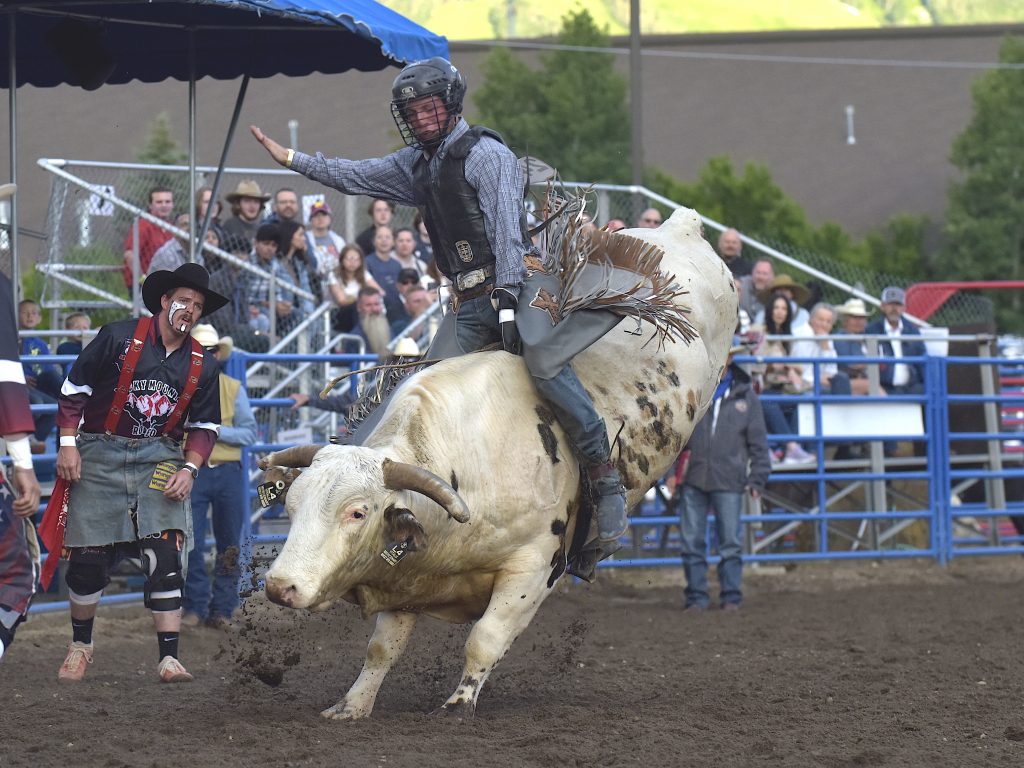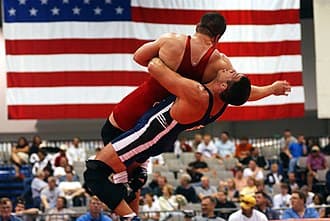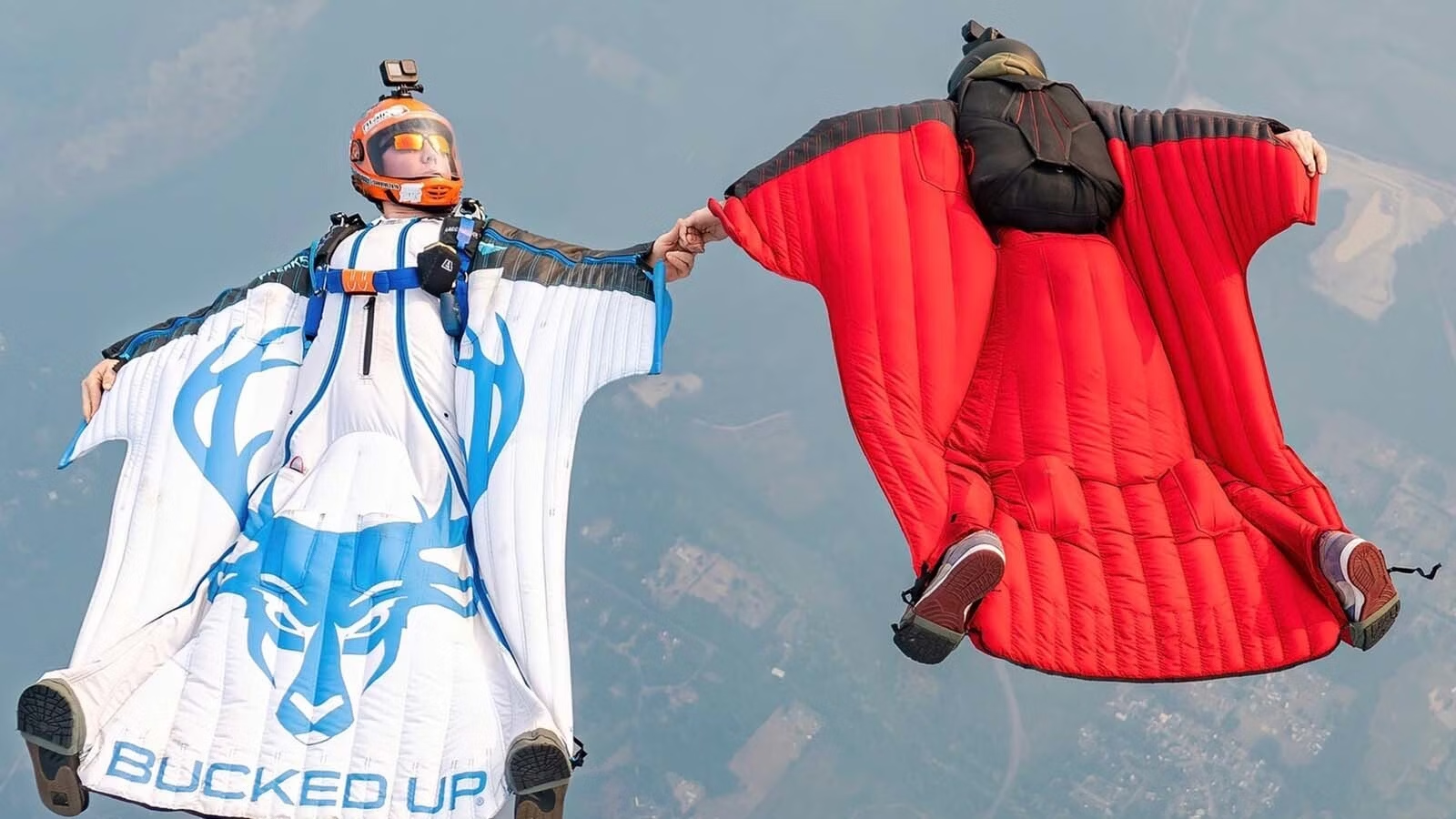Not all sports are created equal—some are far more dangerous than others. From high-speed collisions to full-contact combat, many American sports test the body’s ability to endure trauma. Based on injury data and real-world examples, this list reveals the top 10 most dangerous sports in America. This list is a reminder that for some athletes, stepping into the game means stepping into serious risk.
What is the Most Dangerous Sports in America
Some sports leave bruises. Others leave scars. The adrenaline is real—but so are the risks. These sports are known for serious injuries, intense physical strain, and the ever-present danger of things going wrong in a split second. Here’s a look at the top dangerous sports taking place across America:
- Wrestling
- Bull Riding (Rodeo)
- Boxing
- Cheerleading
- Motocross / Dirt Bike Racing
- Ice Hockey
- American Football
- Skateboarding
- Base Jumping / Wingsuit Flying
- Basketball
#1. Wrestling

Wrestling is one of the toughest sports when it comes to physical strain. It involves constant body contact, takedowns, and high-impact moves that push the body to its limits. Athletes face a serious risk of concussions, neck injuries, sprains, and joint dislocations. With no protective gear and nonstop pressure on the muscles and spine, wrestling ranks high among the most dangerous sports in the country.
#2. Bull Riding (Rodeo)

Bull riding isn’t just tough — it’s downright brutal. Riders climb onto an angry, 1,500-pound animal that’s bred to throw them off. The challenge? Hang on for eight seconds while the bull bucks, twists, and kicks with unpredictable force. Most don’t last that long. When they hit the ground, the danger doesn’t stop — many get trampled or tossed again before help can even reach them. Broken bones, concussions, and internal injuries are all part of the deal. Even with a helmet and vest, bull riding has one of the highest injury rates out there. It’s not just rodeo entertainment — it’s one of the top dangerous sports in America, plain and simple.
#3. Boxing

Step into a boxing ring, and you’re stepping into one of America’s most dangerous sports. The goal is simple: hit and don’t get hit. But in reality, both fighters usually walk away hurt. From cuts and swollen jaws to more serious injuries like fractured bones or brain trauma, the risks are constant. What makes boxing especially brutal is how often the damage isn’t visible right away—it builds up over time, and by then, it’s permanent.
#4. Cheerleading

Cheerleading’s athletic demands are real—and so are the risks. Flyers are tossed into the air while teammates below time their movements to the second. It only takes one mistake for things to go wrong fast. From head trauma to fractured backs, cheerleading has one of the highest rates of injury among high school and college sports. It’s not just a performance—it’s a high-stakes routine where the margin for error is razor-thin.
#5. Motocross / Dirt Bike Racing

Motocross is fast, loud, and unforgiving. Riders launch off dirt ramps, fly over rough terrain, and take sharp turns at speeds that leave no room for error. The crashes aren’t just likely—they’re expected. Even with helmets and gear, motocross remains one of the most hazardous sports in America due to the sheer speed, unpredictability, and impact of every fall. When you combine high-powered machines with uneven tracks and split-second decisions, the margin for safety is razor-thin.
#6. Ice Hockey

There’s no way to sugarcoat it—ice hockey is violent. Players slam into each other at high speed, dive to stop pucks, and crash into walls without hesitation. The pace of the game is relentless, and so are the injuries. It’s not unusual to see concussions, dislocated shoulders, or a player getting stitched up between periods. This isn’t just a cold-weather game—it’s one of the most dangerous sports in the country, and the injury list proves it.
#7. American Football

American football is built on speed, power, and impact, and that combination makes it one of the top dangerous sports in the country. Every play involves full-speed collisions between players wearing helmets and pads, but the protection doesn’t always prevent damage. Concussions, torn ACLs, broken bones, and spinal injuries are common at every level—from high school to the NFL. The constant tackling and explosive contact put a serious strain on the body, and many athletes deal with long-term effects well after they stop playing. No matter how tough the athletes are, football takes a toll.
#8. Skateboarding

Skateboarding has a reputation for creativity and rebellion, but it’s also known for high-impact crashes. Many riders attempt tricks involving stairs, rails, and ledges—without padding or safety nets. A single bad landing can lead to broken bones or a concussion. It’s one of the few sports where the surface is almost always concrete, and the risk is present every time wheels leave the ground. That combination of danger and unpredictability keeps skateboarding near the top of America’s most injury-heavy sports.
#9. Base Jumping / Wingsuit Flying

Base jumping and wingsuit flying turn freefall into a calculated dive through air and gravity. The goal is simple: jump, glide, land—but achieving that safely is anything but. Wingsuit flyers often travel over 100 mph with only a few feet of clearance from cliffs or forests. These sports don’t offer second chances, which is why they consistently rank among the most lethal in the U.S. adventure sports world.
#10. Basketball

Basketball earns its place among the most dangerous sports in America due to the speed, intensity, and high number of injuries it produces year after year. Players are constantly jumping, pivoting, and colliding—all while moving on a solid hardwood floor. This combination leads to a long list of common injuries: ankle sprains, torn ligaments, fractured wrists, and serious knee damage. Even non-contact plays can result in painful falls or overuse injuries that keep athletes sidelined for weeks.
Read More: 10 Best Sports Played in India
What Makes a Sport Dangerous? Key Risk Factors Explained
A sport becomes dangerous when it places the body under extreme stress, either through high-impact collisions, rapid movements, or unpredictable situations. Contact sports raise the risk with direct physical hits, while others involve risky terrain, heights, or high speeds. Limited reaction time, hard surfaces, and overuse injuries also contribute. The dangerous sports tend to mix multiple hazards, increasing the chances of both immediate injury and long-term damage.
FAQ’s
1. Which sport is actually the most dangerous in America?
If you go by fatality rate, base jumping and wingsuit flying are right at the top. But if you’re talking about sheer volume of injuries, basketball and football aren’t far behind.
2. Why are so many athletes getting hurt in mainstream sports like football or basketball?
Because they’re fast, physical, and played nonstop. Even with protective gear, all that jumping, sprinting, and contact adds up, especially over a season.
3. Is cheerleading really that risky, or is that exaggerated?
It’s not exaggerated. Competitive cheer involves stunts, throws, and hard landings—and most of it’s done without pads or helmets. It’s one of the top injury-producing sports for young women.
4. What makes a sport “dangerous”?
Speed, impact, height, and unpredictability. The more of those you combine, the more dangerous it becomes.
5. Do extreme sports always mean extreme danger?
Pretty much. Sports like motocross, bull riding, and base jumping have little margin for error. One wrong move can be life-threatening.
6. What’s the most common injury across all these sports?
Ankle and knee injuries show up in almost every sport. But in boxing and football, concussions and head trauma are a major concern too.
7. Why do people still sign up for these sports if they’re so dangerous?
Because the love for the game, the thrill, or the dream of going pro is stronger than the fear. For many athletes, the risk is just part of the deal.
8. Can any of these sports actually be made safer?
Some, yes—through better training, safety protocols, and equipment. But others, like base jumping, will always carry serious risk no matter what.
Final Words
Some play for the score. Others play knowing every move could send them to the ER. That’s the line between a regular sport and the kind we’ve talked about here. These aren’t just games—they’re high-stakes, full-contact, sometimes life-risking challenges. But for the athletes who show up anyway, that danger is part of the reason they can’t stay away.


